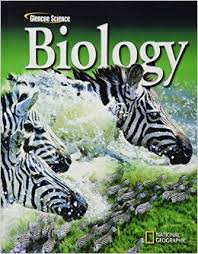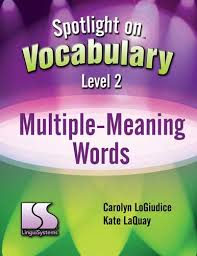English (42759)
Fan Page
Glencoe Biology Interactive Student Edition

Glencoe Biology helps all students succeed with its organization around major Themes, Big Ideas, and Main Ideas of biology and its strong support for reading comprehension. This program's comprehensive content is made relevant to students through engaging real-world contexts. A wide variety of lab experiences builds strong inquiry skills. The abundance of differentiated instructional strategies helps teachers reach all learners.
Reading age for native speakers: High School students
Features:
- Draws students into each section with Real-World Reading Links showing applications to their world
- Helps students organize key information for study and review with Dinah Zike's FoldablesTM. These unique graphic organizers help students take ownership of their learning.
- Helps struggling readers with "Reading Essentials in Biology". This supplement incorporates interactive reading strategies with core content written at a lower level than the textbook.
- Builds students' note-taking skills with "Science Notebook". This resource uses the research-based Cornell two-column, note-taking system that has proven to be successful in increasing retention of core content.
CONTENTS
Student Guide
Introduction
Chapter 1: The Study of Life
- Section 1: Introduction to Biology
- Section 2: The Nature of Science
- Section 3: Methods of Science
UNIT 1 Ecology
Chapter 2: Principles of Ecology
- Section 1: Organisms and Their Relationships
- Section 2: Flow of Energy in an Ecosystem
- Section 3: Cycling of Matter
Chapter 3: Communities, Biomes, and Ecosystems
- Section 1: Community Ecology
- Section 2: Terrestrial Biomes
- Section 3: Aquatic Ecosystems
Chapter 4: Population Ecology
- Section 1: Population Dynamics
- Section 2: Human Population
Chapter 5: Biodiversity and Conservation
- Section 1: Biodiversity
- Section 2: Threats to Biodiversity
- Section 3: Conserving Biodiversity
UNIT 2 The Cell
Chapter 6: Chemistry in Biology
- Section 1: Atoms, Elements, and Compounds
- Section 2: Chemical Reactions
- Section 3: Water and Solutions
- Section 4: The Building Blocks of Life
Chapter 7: Cellular Structure and Function
- Section 1: Cell Discovery and Theory
- Section 2: The Plasma Membrane
- Section 3: Structures and Organelles
- Section 4: Cellular Transport
Chapter 8: Cellular Energy
- Section 1: How Organisms Obtain Energy
- Section 2: Photosynthesis
- Section 3: Cellular Respiration
Chapter 9: Cellular Reproduction
- Section 1: Cellular Growth
- Section 2: Mitosis and Cytokinesis
- Section 3: Cell Cycle Regulation
UNIT 3 Genetics
Chapter 10: Sexual Reproduction and Genetics
- Section 1: Meiosis
- Section 2: Mendelian Genetics
- Section 3: Gene Linkage and Polyploidy
Chapter 11: Complex Inheritance and Human Heredity
- Section 1: Basic Patterns of Human Inheritance
- Section 2: Complex Patterns of Inheritance
- Section 3: Chromosomes and Human Heredity
Chapter 12: Molecular Genetics
- Section 1: DNA: The Genetic Material
- Section 2: Replication of DNA
- Section 3: DNA, RNA, and Protein
- Section 4: Gene Regulation and Mutation
Chapter 13: Genetics and Biotechnology
- Section 1: Applied Genetics
- Section 2: DNA Technology
- Section 3: The Human Genome
UNIT 4 History of Biological Diversity
Chapter 14: The History of Life
- Section 1: Fossil Evidence of Change
- Section 2: The Origin of Life
Chapter 15: Evolution
- Section 1: Darwin’s Theory of Natural Selection
- Section 2: Evidence of Evolution
- Section 3: Shaping Evolutionary Theory
Chapter 16: Primate Evolution
- Section 1: Primates
- Section 2: Hominoids
- Section 3: Human Ancestry
Chapter 17: Organizing Life’s Diversity
- Section 1: The History of Classification
- Section 2: Modern Classification
- Section 3: Domains and Kingdoms
UNIT 5 Bacteria, Viruses, Protists, and Fungi
Chapter 18: Bacteria and Viruses
- Section 1: Bacteria
- Section 2: Viruses and Prions
Chapter 19: Protists
- Section 1: Introduction to Protists
- Section 2: Protozoans – Animal-like Protists
- Section 3: Algae – Plant-like Protists
- Section 4: Fungus-like Protists
Chapter 20: Fungi
- Section 1: Introduction to Fungi
- Section 2: Diversity of Fungi
- Section 3: Ecology of Fungi
UNIT 6 Plants
Chapter 21: Introduction to Plants
- Section 1: Plant Evolution and Adaptations
- Section 2: Nonvascular Plants
- Section 3: Seedless Vascular Plants
- Section 4: Vascular Seed Plants
Chapter 22: Plant Structure and Function
- Section 1: Plant Cells and Tissues
- Section 2: Roots, Stems, and Leaves
- Section 3: Plant Hormones and Responses
Chapter 23: Reproduction in Plants
- Section 1: Introduction to Plant Reproduction
- Section 2: Flowers
- Section 3: Flowering Plants
UNIT 7 Invertebrates
Chapter 24: Introduction to Animals
- Section 1: Animal Characteristics
- Section 2: Animal Body Plans
- Section 3: Sponges and Cnidarians
Chapter 25: Worms and Mollusks
- Section 1: Flatworms
- Section 2: Roundworms and Rotifers
- Section 3: Mollusks
- Section 4: Segmented Worms
Chapter 26: Arthropods
- Section 1: Arthropod Characteristics
- Section 2: Arthropod Diversity
- Section 3: Insects and Their Relatives
Chapter 27: Echinoderms and Invertebrate Chordates
- Section 1: Echinoderm Characteristics
- Section 2: Invertebrate Chordates
UNIT 8 Vertebrates
Chapter 28: Fishes and Amphibians
- Section 1: Fishes
- Section 2: Diversity of Today’s Fishes
- Section 3: Amphibians
Chapter 29: Reptiles and Birds
- Section 1: Reptiles
- Section 2: Birds
Chapter 30: Mammals
- Section 1: Mammalian Characteristics
- Section 2: Diversity of Mammals
Chapter 31: Animal Behavior
- Section 1: Basic Behaviors
- Section 2: Ecological Behaviors
UNIT 9 The Human Body
Chapter 32: Integumentary, Skeletal, and Muscular Systems
- Section 1: The Integumentary System
- Section 2: The Skeletal System
- Section 3: The Muscular System
Chapter 33: Nervous System
- Section 1: Structure of the Nervous System
- Section 2: Organization of the Nervous System
- Section 3: The Senses
- Section 4: Effects of Drugs
Chapter 34: Circulatory, Respiratory, and Excretory Systems
- Section 1: The Circulatory System
- Section 2: The Respiratory System
- Section 3: The Excretory System
Chapter 35: Digestive and Endocrine Systems
- Section 1: The Digestive System
- Section 2: Nutrition
- Section 3: The Endocrine System
Chapter 36: Human Reproduction and Development
- Section 1: Reproductive Systems
- Section 2: Human Development Before Birth
- Section 3: Birth, Growth, and Aging
Chapter 37: Immune System
- Section 1: Infectious Diseases
- Section 2: The Immune System
- Section 3: Noninfectious Disorders
Student Resources
Skillbuilder Handbook
- Problem-Solving Skills
- Math Skills
- Reference Handbook
English/Spanish Glossary
Index
Credits
This material for VIP Membership only, please Sign up or Login to unlimit any download.
- VIP for 01 day : 9 USD (Accept and recommend pay by paypal/Crypto)- VIP for 01 month : 33 USD (Accept pay by paypal or bank account/VISA card/Western Union/Crypto)
- VIP for 01 year : 99 USD (Accept pay by paypal or bank account/VISA card/Western Union/Crypto)
- VIP forever - Unlimit time : 333 USD (Accept pay by paypal or bank account/VISA card/Western Union/Crypto)
* Below is payment button by paypal (CLICK 'Send' IN THE NEXT PAGE), If you pay by other methods, pls contact us (huyhuumik@gmail.com).
*Notes : Your account will be upgraded to VIP Member after we receive your payment (Sometime you need to wait a few minutes or a few hours). After received your payment, we will inform to your email that you provide, then please login again.
Here is an example for VIP, If you become a VIP member you will see the link download as below:
Improve Your IELTS Reading Skills (Ebook)
* Link VIP 1 is the main link, Link VIP 2,3,4 is backup/mirror links, download 01 link is enough
Improve Your IELTS Reading Skills (Ebook)
* Link VIP 1 is the main link, Link VIP 2,3,4 is backup/mirror links, download 01 link is enough







